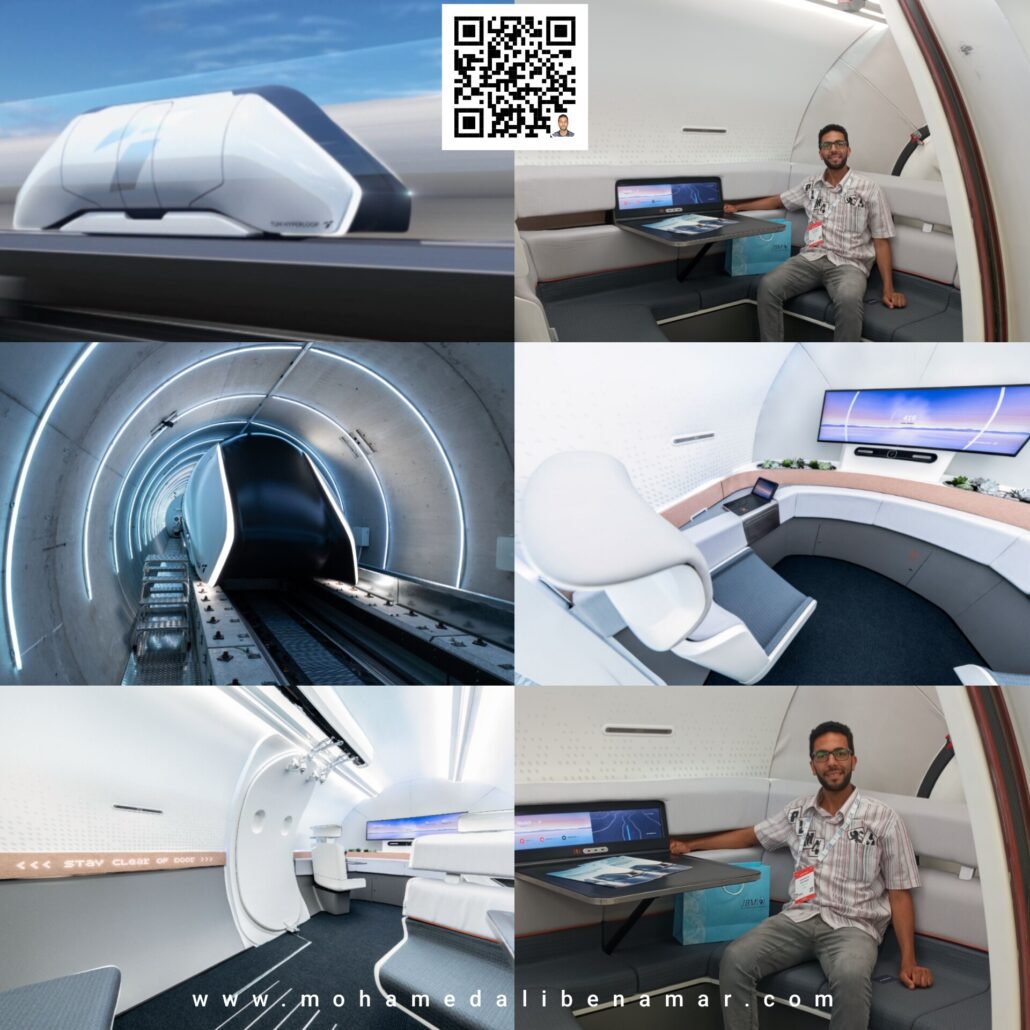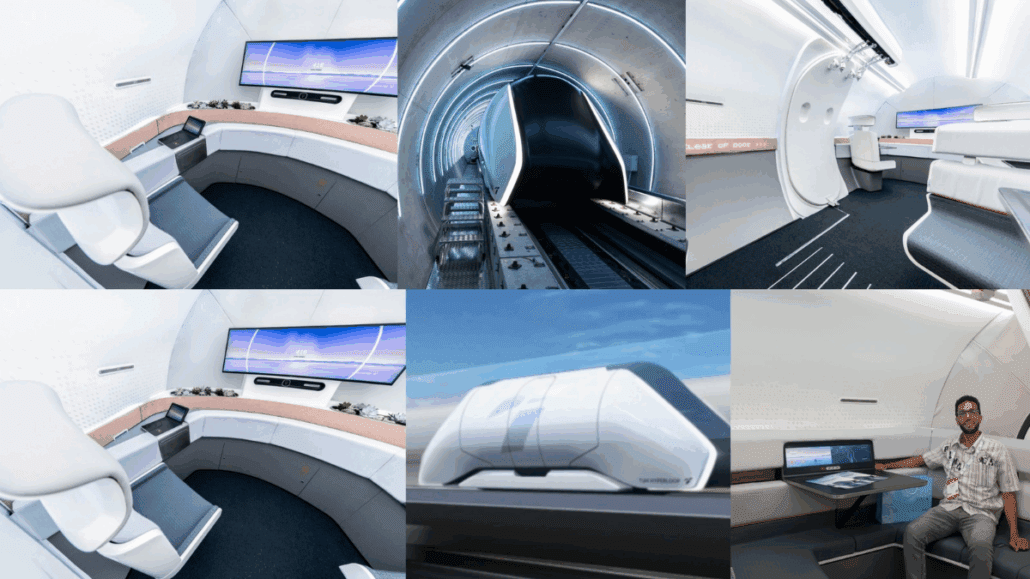For years, TUM Hyperloop has been a buzzword in mobility discussions—a futuristic concept promising ultra-fast, zero-emission travel through vacuum tubes.
At Hamburg this year, it became tangible. The TUM Hyperloop team presented a certified Hyperloop segment and a full-scale passenger pod designed for use under partial vacuum conditions.

This milestone didn’t happen overnight. According to the information shared at the stand, the TUM Hyperloop team achieved something remarkable last year: the first passenger run under vacuum conditions in Europe, a feat previously accomplished only once in the world. After years of development and a 10-month construction effort, they successfully tested a one-kilometer track near Munich, proving that the future of sustainable high-speed mobility is closer than we think.
Inside the Passenger Module: A Glimpse Into Tomorrow
The moment I stepped inside the pod, I felt like I had entered a science-fiction movie set. The interior design was sleek, minimalist, and highly functional, with integrated digital screens, modular seating, and a futuristic ambiance enhanced by soft LED lighting. Unlike a traditional train or aircraft cabin, the Hyperloop pod felt open, personalized, and optimized for comfort—even at incredible speeds.
The concept goes beyond transportation; it’s about creating a new travel experience. The pod is designed for partial vacuum operation, combining ultra-lightweight materials for energy efficiency and safety with smart interior layouts for passenger comfort. Whether traveling alone or in a group, the seating configurations offer flexibility, privacy, and convenience.
I couldn’t resist taking photos and even sitting down to test the seating arrangement. Looking around, I realized that this isn’t just a concept anymore—this is mobility reimagined, and it is happening now.
A Memorable Conversation with Ruben König
One of the highlights of my Hyperloop experience at UITP Hamburg was my conversation with Ruben König, a board member involved in shaping this technology’s future. Our discussion was insightful and thought-provoking, touching on the challenges and opportunities ahead for TUM Hyperloop.
Ruben emphasized the importance of rigorous testing and certification, explaining that TUM Hyperloop’s current efforts are not just about building a pod, but about creating a fully operational, safe, and scalable transport system. He highlighted the environmental benefits—Hyperloop aims to be not only fast but also a green alternative to short-haul flights and congested highways.
When I asked about the timeline for commercialization, Ruben was realistic but optimistic: “We’re making steady progress, and with continued support and collaboration, we could see operational Hyperloop routes within the next decade.” His passion for innovation and sustainable mobility left a lasting impression on me.
What’s Next for TUM Hyperloop?
The road ahead (or rather, the tube ahead) involves more research, testing, and certification. The one-kilometer track in Munich serves as a critical platform for validating key components—vehicle design, propulsion, safety systems, and passenger experience.
Once these elements are certified, the goal is to scale up and connect cities in record time—transforming how we travel, live, and work. Imagine going from Hamburg to Berlin in under 30 minutes or connecting Paris to Amsterdam in less than an hour—all without emissions, queues, or airport hassles. That’s the promise of Hyperloop.
Final Thoughts: A Journey I’ll Never Forget
Attending the UITP Summit 2025 was already a privilege, but experiencing Hyperloop firsthand was a highlight that I will never forget. This isn’t just another transport project—it’s a bold vision for a smarter, greener, and faster future.
As I left the Hyperloop stand, I felt excited, inspired, and convinced that we are on the verge of a mobility revolution. If this technology achieves its full potential, it will redefine the way we think about distance, time, and travel.
Would you ride the Hyperloop when it becomes available? Share your thoughts in the comments—I’d love to hear your perspective on the future of mobility.
